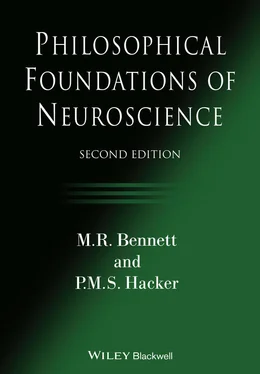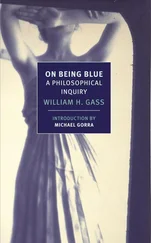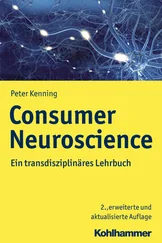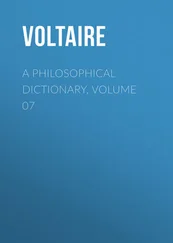One thousand years of the ventricular doctrine
The ventricular doctrine for the localization of psychological functions, established in the first centuries of the first millennium, was still accepted and promulgated by scholars at the beginning of the second millennium. Thus Avicenna (Abu Ali al-Husain ibn Abdullah ibn Sina), a great physician and philosopher working in the years 980–1037, could write that:
[T]he sensus communis is located in the forepart of the front ventricle of the brain. It receives all the forms which are imprinted on the five senses and transmitted to it from them. Next is the faculty of representation, located in the rear part of the front ventricle of the brain, which preserves what the sensus communis has received from the individual five senses even in the absence of the sensed object. Next is the faculty of sensitive imagination in relation to the animal soul. This faculty is located in the middle ventricle of the brain. Then there is the estimative faculty located in the far end of the middle ventricle of the brain. Next there is the retentive and recollective faculty located in the rear ventricle of the brain. 36
Ventricular localization still held sway during the Quattrocento in Italy. Physicians like Antonio Guainerio (d. 1440) ascribed problems with memory in some patients to ‘an excessive accumulation of phlegm in the posterior ventricle so that the “organ of memory” was impaired’. 37The doctrine was still being taught in the best teaching centres at the beginning of the sixteenth century, as is indicated by illustrations produced in the 1494 edition of Aristotle’ s De Anima . Leonardo da Vinci (1452–1519) went to great trouble to determine the first accurate description of the ventricles, given their presumed importance in the mental life of humans. In order to achieve this ( c . 1506), he injected molten wax into the cavities in cattle. His drawings provide detail of a kind unmatched in accuracy, although they still ascribe the mental faculties to the different ventricles. In these drawings Leonardo’ s only deviation from the doctrine laid down by Nemesius 1,100 years earlier was to localize perception and sensation in the middle ventricle rather than in the lateral ventricles, a change which Leonardo made on the ground that most sensory nerves converged on the midbrain rather than more anteriorly.
Andreas Vesalius (1514–1564) comments on the dominance of the ventricular doctrine when he was at the University of Louvain. He gave detailed, accurate drawings of the human ventricles in 1543 and accompanied these in his Fabrica with descriptions of how psychic pneuma is generated in the ventricles and then distributed to the nerves in ways that are not much different from those suggested by Galen. 38Although Vesalius subscribed to the conception of ventricles as the origins of the psychic pneuma , following Galen, he was sceptical about the idea that psychological functions originate in the ventricles. His writings on this are important, for they prepare the way for Thomas Willis, who, a century later, was to provide the definitive shift of attention away from the ventricles to the substance of the brain itself in the search for the physical basis of psychological functions. Vesalius noted that as the shape of the ventricles is much the same in a variety of mammals, including humans, it is difficult to associate psychological powers such as reasoning, which demarcate humans from other mammals, with the ventricles. 39
1.2 Fernel and Descartes:The Demise of the Ventricular Doctrine
Fernel: the origins of ‘neurophysiology’
The concepts of physiology and neurophysiology originated at the time of Vesalius. Although some have credited Aristotle in his biological writings as having dealt with physiological subjects and have conceived of Galen’ s On the Usefulness of the Parts as the earliest separate treatise dealing with human physiology, it is the sixteenth-century physician and scholar Jean Fernel (1495–1558) who should be credited with the first formal treatment of physiology. Fernel’ s De naturali parte medicinae , published in Paris in 1542, contains the word ‘physiologia’ for the first time. In it, physiology was first defined: ‘Physiology tells the causes of the actions of the body.’ 40Fernel distinguishes anatomy, which indicates only where processes take place, from physiology, which studies what the processes or functions of the various organs are. The book was renamed Physiologia in the 1554 edition, and was soon regarded as the major treatise on the subject, a position it held for more than a century.
Aquinas’ s influence on Fernel
Fernel’ s empirical observations, as well as his general reflections, are accommodated within the framework of late medieval Aristotelian thought as modified by Christian thinkers (in particular Thomas Aquinas’ s great synthesis). Like Aristotle, Fernel holds that plants and animals have a soul ( anima ), or principle of life. Possession of a rational soul (i.e. a soul that includes the powers of the intellect and will) is distinctive of man. Unlike Aristotle, but like Aquinas, Fernel conceived of the rational soul of man (as distinct from his nutritive and sensitive soul) as separable from the body, and as immortal. 41It is, to be sure, far from clear whether the Aristotelian conception of the psuchē as an array of powers and capacities (second-order powers) – can be coherently married with Christian doctrines concerning the immortality of the soul. But that was precisely what Aquinas had endeavoured to do (and in the course of his endeavour, he had reified the intellect and confused the incorporeality of powers (which are abstractions) with the alleged incorporeality of the soul, conceived as a non-physical part of a human being). 42Other scholastic philosophers also contributed to the attempted synthesis of Christianity with Aristotelian philosophy. Fernel was heir to this confused tradition.
‘Physiology’ as the study of organ function: Fernel
Physiology, according to Fernel, is concerned with the processes that produce a healthy body and soul. He comments that ‘In all animate beings, and most in man, the body has been created for the sake of the soul ( gratia animae ). It is for that soul not only a habitation ( diversorium ) but an adjusted instrument for use by its (the soul’ s) inherent powers.’ 43This was an Aristotelian doctrine. As we have noted, the relation of the soul to the body, according to Aristotle, is analogous to the relation of sight to the eye. The eye exists for the sake of sight ( DA 412 b17–24); that is its point and purpose. So, too, the body exists for the sake of the soul – that is, for the sake of the powers and capacities of which the soul consists. Without these, and their actualization in the behaviour of the living animal, there would be no point to the existence of the body ( DA 415 b15–21; De Partibus Animalium 645 b19). The explanation of the actions of the parts of an organism must be in terms of their contribution to the optimal functioning of the whole of which they are the parts.
Fernel conceived of perception as produced by the transmission of images from the sense-organs to the common sensorium in the brain, where they are apprehended by the internal sense. Memory and imagination are two subordinate faculties of the sentient soul, and they enable the sentient animal to apprehend what is pleasant or unpleasant, beneficial or harmful. Appetite causes a movement towards a pleasing or beneficial object, or a movement away from a displeasing or harmful one. This is effected by the contraction of the brain forcing the animal spirits from the front ventricle into the fourth (rear) ventricle, and thence down the spinal cord and out along the nerves into the muscles.
Читать дальше












